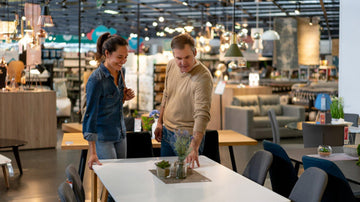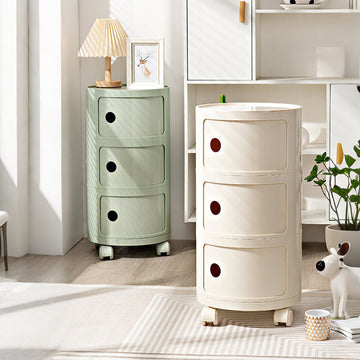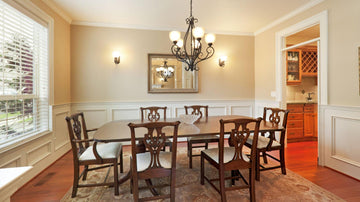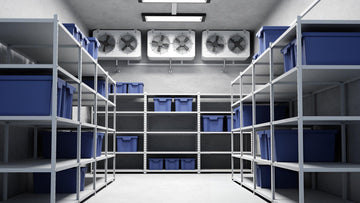Table of Contents
- Introduction
- Round Tables: Great Vibe, But Not Always Perfect
- Square Tables: Small Space Heroes (But Not for Everyone)
- Rectangular Tables: The Classic That Still Works
- Oval, Hexagonal, and Tables That Don’t Follow the Rules
- Before You Buy: Measure, Then Measure Again
- Matching Table Shapes to Real Life
- Material + Shape = Big Difference
- Budgeting Without Regret
- Mistakes I’ve Made (So You Don’t Have To)
- Final Thoughts: The Table That Works For You
I used to think picking a dining table was all about size and color. Big enough for guests, neutral enough not to clash with the kitchen tiles. But after living in three apartments with very different layouts—and one very wrong-sized table—I realized it’s the shape that matters most.
A table might look stunning in a showroom, but once you get it home, you may find yourself bumping into corners, squeezing chairs too close together, or wondering why the space suddenly feels off.
The shape of the table changes everything. It affects how you move around the room, how people talk to each other during meals, and even how the whole space feels—open, tight, formal, casual.
Some shapes naturally invite conversation. Others make the most of every square inch. And certain ones? They just don’t belong in every room, no matter how beautiful they are.
So if you’re torn between a round, square, rectangular—or even oval—table, here’s what I’ve figured out along the way. Not from design theory, but from actually living with them.

Round Tables: Great Vibe, But Not Always Perfect
Why People Love Them (And Why I Do Too)
There’s something undeniably friendly about round tables. Maybe it’s the lack of corners, or the way everyone’s equally spaced. I’ve always found that meals at a round table feel more relaxed. Nobody’s at “the head” of the table. You don’t have to lean or twist to see someone’s face.
And if you’ve got kids (or just clumsy adults), the absence of sharp edges is a blessing. I’ve seen too many bruised hips and bumped heads from square tables in tight spaces.
One more thing: round tables tend to feel softer visually. In rooms with lots of straight lines—windows, shelves, counters—they break things up in a nice way.
But... They Don’t Fit Everywhere
Here’s the truth: round tables take up more space than you think. That cozy little 4-seater? It suddenly feels massive once you add chairs and try to walk around it. Especially in narrow or rectangular rooms, they can eat up usable space fast.
And large round tables? Lovely for big dinners—until you realize nobody can reach the salad bowl in the center. I’ve been at a dinner where someone had to pass a set of tongs around the entire table just to get to the chicken.
What Kind of Space Works
If your dining area is square or close to it, round tables make a lot more sense. I once lived in a rental with a perfectly square kitchen-dining combo, and a round table made the whole space feel balanced.
Here's what I’ve found works best:
-
For 2–4 people: 90–100 cm diameter
-
For 4–6: 110–130 cm
-
Over 6? You’re in “do-you-have-a-lazy-susan?” territory
Always leave at least 80–90 cm between the edge of the table and any walls or furniture—otherwise people end up shimmying sideways to sit down.
Recap Without the Sales Pitch
-
Feels warm, social, and child-safe
-
Great for square rooms
-
Less great for narrow layouts or big households

Square Tables: Small Space Heroes (But Not for Everyone)
When Straight Lines Work in Your Favor
I once lived in a 50㎡ apartment where the dining area was basically a box between the front door and the kitchen counter. A round table felt awkward. A long one didn’t fit. A square table? Just right.
What surprised me was how flexible it was. I used it for meals, for working from home, even as a spot to fold laundry. When guests came over (rare but real), I could pull it slightly away from the wall and fit a fourth chair without drama.
It didn’t feel formal. It felt functional.
Where They Fit Best
If your dining space is roughly square, this shape makes sense. It tucks in neatly, doesn’t dominate the room, and doesn’t leave weird gaps at the edges.
A few things I learned the hard way:
-
Don’t go too small—it looks like a side table
-
Don’t go too big—it overwhelms the room
-
90–100 cm sides work well for 4 people
-
You’ll need at least 70–80 cm clearance around it to avoid bumping into things
Aesthetics and Add-ons
Square tables do pair well with minimalist or modern interiors. They just feel tidy. I’ve also seen them softened with curved chairs or even a round rug underneath to balance the lines.
One tip: if the table’s against a wall, consider a bench on one side. Saves space and adds a casual vibe.

Rectangular Tables: The Classic That Still Works
There’s a Reason They’re Everywhere
Walk into almost any dining room, and chances are you’ll see a rectangular table. They’ve been around forever, and they’re not going anywhere.
Why? Because they work. They seat more people without taking up extra width. They make sense in long or open spaces. And they look good with pretty much any style—from farmhouse to glass-and-metal modern.
I grew up eating at a long oak table with six mismatched chairs. It wasn’t fancy, but it was solid, and everyone had enough elbow room.
Where They Shine (and Where They Don’t)
If your space is long and narrow—or open-plan with room to define zones—this is your shape. You can seat guests along the sides, tuck it near a wall, or float it in the middle of a big room.
But if you try to squeeze one into a small square dining nook? Feels like someone parked a canoe in your kitchen.
As for size:
-
4 people: 120–140 cm
-
6 people: 150–180 cm
-
8+ people: 200 cm and up
Leave at least 90 cm behind chairs to let people move around comfortably. If you don’t, you’ll hear about it every time someone tries to get up.
How to Make It Work Harder
Some people like to mix it up—chairs on one side, a bench on the other. Others treat one end as a workspace and the other for meals. I’ve even seen someone use the middle of the table for plants, keeping both ends free for eating.
Rectangular tables are also the easiest to find if you’re shopping secondhand or on a budget. More options, more styles, more flexibility.

Oval, Hexagonal, and Tables That Don’t Follow the Rules
The “In-Between” Option: Oval
Oval tables are kind of like the cool middle child. They bring the friendliness of a round table but stretch it out to seat more people.
I once helped a friend set up a dining room with one, and it softened the space in a way a rectangle wouldn’t have. It also let us squeeze in two extra chairs without feeling crowded.
Best for medium-sized rooms where you want flow but also function. And if you’ve got kids? No corners = fewer bruises.
Other Shapes I’ve Seen Work (Surprisingly)
-
Hexagonal or octagonal tables: Look dramatic, but only for big rooms—you need space to breathe
-
Asymmetrical or sculptural tables: Mostly for show, not practicality
-
Convertible tables: Fold-out designs or slide-to-expand mechanisms are lifesavers in small apartments
Before You Buy: Measure, Then Measure Again
It’s Not Just About Table Size
You’re not just fitting a table—you’re fitting people, chairs, movement, and moments. I once picked a beautiful table that technically fit… until I realized the chairs couldn’t slide out without hitting the wall.
So here’s what I check now:
-
Room width and length
-
Door swings
-
Walkways (aim for at least 90 cm)
-
Any nearby furniture or storage
Use painter’s tape to mark the table shape on the floor. It’s the easiest way to see how much space it really takes.
Think Human, Not Just Geometry
Standard dining table height is around 75 cm. Chair seat height should be 45–48 cm. That gives you enough legroom but still feels grounded.
And if you’ve got kids, grandparents, or anyone with mobility concerns? Skip high stools or sharp corners altogether.
Matching Table Shapes to Real Life
What Kind of Household Are You?
-
Couples: A 2–4 seater round or square table is more than enough
-
Families of three: Go with a slightly bigger square or a small rectangle—leave room to grow
-
Big families: You’ll want a rectangular or extendable table that seats 6–10
-
Older folks: Prioritize comfort, arm support, and space to move around
What Kind of Life Do You Live?
-
Always hosting dinner parties? Get that big rectangular table—and maybe some folding chairs
-
Minimalist? A small round or square table in wood or metal does the job
-
Work-from-home family? Look for depth and surface area—you’ll fill it fast
-
Traditional setup? Stick to classic shapes and solid materials. They age well.
Material + Shape = Big Difference
The Material Affects the Mood
-
Wood: Works with every shape, adds warmth. My favorite for everyday use.
-
Glass: Best with round or oval tables. Feels elegant, but shows fingerprints.
-
Marble or stone: Gorgeous, but heavy. Looks best in rectangular or oval form.
-
Metal: Great for industrial vibes, especially with square or long tables.
And the Room Itself Matters
-
Modern? Metal and glass. Clean lines. Square or rectangular.
-
Rustic? Wood, round or long.
-
Eclectic? Mix and match!
-
Scandi feel? Light wood, oval or round shapes, soft tones
Budgeting Without Regret
Shape Can Influence Price
Round and oval tables often cost more due to their construction. Rectangles are usually cheaper and easier to find secondhand.
Material matters too—solid wood costs more than veneer, and marble always comes with a price tag.
What’s Worth Spending On?
-
Sturdy legs
-
Smooth edges
-
Durable finish
-
Extension options (if you regularly host guests)
I always say: buy the best you can afford that fits your space now and won’t feel dated next year.

Mistakes I’ve Made (So You Don’t Have To)
-
Buying too big because I thought "more space is better"—then couldn’t open the fridge
-
Ignoring chairs—a table is only as comfortable as what you sit on
-
Going for looks over function—those sharp corners looked great until my shin found them
-
Not thinking ahead—what works for two might not work for four in a year
Before buying, double-check:
-
Room size
-
Your real seating needs
-
Walkways
-
Existing furniture—can you still move around freely?
Final Thoughts: The Table That Works For You
Forget the “right” shape. The right table is the one that fits your life.
Round tables feel cozy. Rectangles offer space. Squares are practical. Ovals give you the best of both worlds. It all depends on how you live, who you live with, and what kind of energy you want in your space.
If you’re still unsure? Tape it out on the floor. Walk around it. Sit where the chairs would go. You’ll know when it feels right.








